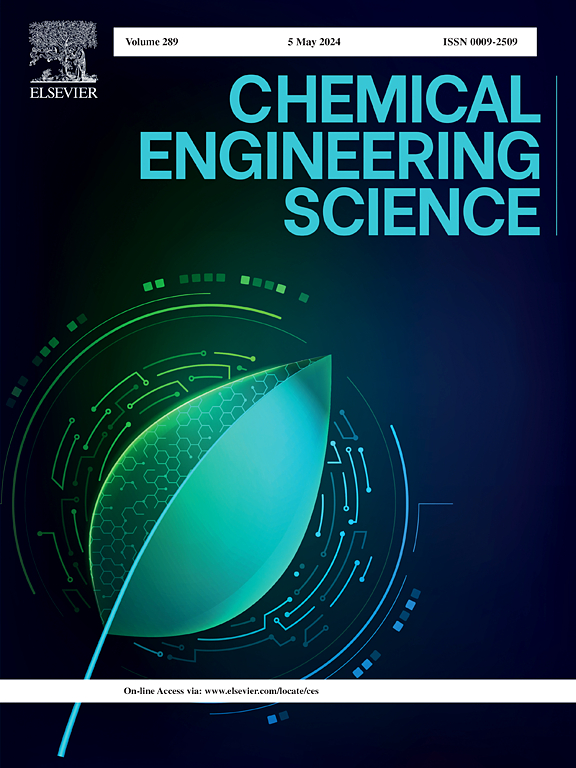Electrochemical oxidative dehydrogenation of propane within solid oxide electrolysis cells
IF 4.1
2区 工程技术
Q2 ENGINEERING, CHEMICAL
引用次数: 0
Abstract
The oxidative propane dehydrogenation (OPDH) to propylene represents a promising and viable route for the growing demand of olefin production. Poor propylene products selectivity, however, is a severe challenge due to the easy deep oxidation. Herein, we proposed a conceptually novel process of electrochemical CO2-OPDH based on solid oxide electrolysis cells (SOECs), which is expected to efficiently produce propylene simultaneously utilizing CO2. By regulating the migration behavior of oxygen species from cathode to anode through current, an 80.7 % low-carbon olefins selectivity was achieved, and the propane conversion was increased by 17 times compared to open circuit conditions. Intrinsically, the current driven lattice oxygen on-line restoration mechanism was proposed, that the electrolytic O2− migrates to anode surface driven by the current to effectively restore the lattice oxygen and maintains the active structure, leading to improved OPDH performance and suppressing coking. This work provides a new electrochemical approach for selective oxidation reactions.

固体氧化物电解池中丙烷的电化学氧化脱氢
丙烷氧化脱氢制丙烯为满足日益增长的烯烃生产需求提供了一条有前途和可行的途径。然而,丙烯产品选择性差是一个严峻的挑战,因为它容易深度氧化。在此,我们提出了一种概念新颖的基于固体氧化物电解电池(soec)的电化学CO2- opdh工艺,该工艺有望有效地利用CO2同时生产丙烯。通过电流调节氧从阴极到阳极的迁移行为,实现了80.7 %的低碳烯烃选择性,丙烷转化率比开路条件提高了18倍。本质上,提出了电流驱动的晶格氧在线恢复机制,即在电流的驱动下,电解O2−迁移到阳极表面,有效地恢复了晶格氧,维持了活性结构,从而提高了OPDH性能,抑制了结焦。这项工作为选择性氧化反应提供了一种新的电化学方法。
本文章由计算机程序翻译,如有差异,请以英文原文为准。
求助全文
约1分钟内获得全文
求助全文
来源期刊

Chemical Engineering Science
工程技术-工程:化工
CiteScore
7.50
自引率
8.50%
发文量
1025
审稿时长
50 days
期刊介绍:
Chemical engineering enables the transformation of natural resources and energy into useful products for society. It draws on and applies natural sciences, mathematics and economics, and has developed fundamental engineering science that underpins the discipline.
Chemical Engineering Science (CES) has been publishing papers on the fundamentals of chemical engineering since 1951. CES is the platform where the most significant advances in the discipline have ever since been published. Chemical Engineering Science has accompanied and sustained chemical engineering through its development into the vibrant and broad scientific discipline it is today.
 求助内容:
求助内容: 应助结果提醒方式:
应助结果提醒方式:


